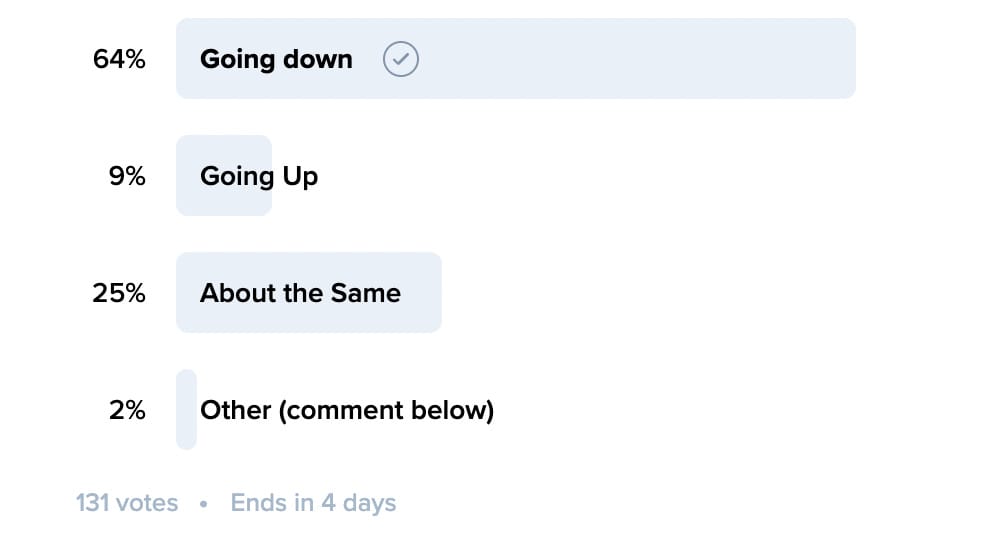B2B shouldn't be boring
Workweek's Adam Ryan discusses the company's creator-led model

I appreciate all the notes people sent in with their own newspaper delivery stories in response to the paperboy chronicles. (I’m tempted to do a sequel from my deeper experience as a dishwasher, the hardest job I’ll ever have.) It’s funny how, particularly as you get older, those kinds of experiences bring back memories – and our human tendency to attach meaning to them in retrospect. That’s one reason not to look at the immediate impact of events because we might view them differently in the long run. This week:
- For The Rebooting Show – you should subscribe on Apple or Spotify – I spoke to Workweek CEO Adam Ryan about their model for a creator-focused B2B media company.
- A reminder from Bombora why complacent isn’t a strategy in most areas of life, including the phaseout of the third-party cookie.
- Why performance isn’t necessarily a safe haven.
- The problem with threads.

Coming out of Columbia’s J-school, I was an anomaly among my classmates in that I gravitated to business writing. I wanted to differentiate from more talented peers, and I had no desire to move to a random place to work for a local newspaper and claw my way from market to market. I liked business writing, the pay was marginally better and I could live in NYC. Sign me up. Over time, I realized the ability to go narrow and deep, a necessity in trade publishing, is not just a career asset but also rewarding. B2B media was also more insulated from the tumult that hit publishing with the advancement of the internet.
But B2B always had its knocks. They typically revolved around the boring content, the tendency to cheerlead rather than ask hard questions, and the poorly designed and often low quality products, not to mention the reality that the actual journalism was often treated as a second-order priority since the money was made in database marketing and events. That’s changed with the sector’s overall modernization as well as a newer crop of digitally native business publications that are taking different approaches.
Adam Ryan, former president of The Hustle and cofounder of Workweek, wants to rethink the B2B model. Workweek is banking on finding individuals – creators, if you will – to build audiences around. The bet is that individuals, particularly but not exclusively those who are practitioners in the field, can build deeper connections with audiences while benefiting from the infrastructure, services and halo effect of a parent media brand.
Some highlights from our discussion:
Don’t raise too much money. Adam spent part of his career at Spiceworks, a professional network for IT professionals. The company identified an underserved community and executed on the opportunity, only to have an unsatisfying outcome. “It was a great company, bad cap table,” Adam said. “They actually made a ton of money. They didn't need to raise that much money. And then because they did, they made terrible decisions, long term.”
You can be professional and have personality. Workweek is leaning on its network of 19 creators to be front and center. It doesn’t have an editor-in-chief and instead relies on its newsletter writers to chart their own path that hews closely to what motivates them. Nicole Casperson, for instance, writes WTFintech and focuses often on diversity and inclusion issues that are important to her personally.
Sector expertise is critical. Not all Workweek creators worked in the fields they cover, but many do. Workweek writer Nik Sharma, for instance, is a DTC marketer. This hands-on familiarity with the issues in these fields in invaluable, so long as it is also married with the ability to clearly communicate and consistently produce valuable pieces. “The reason why [B2B content] is kind of boring is because you have a lot of people that have never done those jobs,” he said . “They're just like listening and regurgitating. They're not like coming from a point of action.”
Paid acquisition is more than a shortcut. Publishers used to have an aversion to admitting to buying traffic. I can remember BuzzFeed making sure to point out it only bought ads for its sponsor content, not editorial. But Adam saw how an effective paid audience development strategy can accelerate growth. For instance, Workweek’s The Marketing Millennials property grew by 7,000 newsletter subscribers organically in seven weeks while paid acquisition added 20,000. So long as a company is confident in its cost per subscriber number, and is focused on quality of acquired subscribers, paid acquisition is an important tool. Overall, Workweek pays to acquire nearly half its nearly 250,000 subscriptions at an average cost of $10 per subscriber.
You need connective tissue. Workweek has cast a broad net in its first eight months of existence, with newsletters focused on everything from cannabis to fin tech to memes to franchises to marketing. It has since refined the model around “pods” of core categories. Workweek has clusters around areas like startups and investing, health, marketing and fintech. “It just allowed the business to focus on marketing allows our business to essentially have more efficiencies,” Adam said.
Check out the full episode on Apple, Spotify or Anchor. This is obviously an area I have a bunch of personal experience in and am thinking a lot about myself as I figure out what The Rebooting becomes. I always think Adam and I see things very similarly, only we come at them from different sides (content for me, distribution and monetization for Adam). Also, be sure to sign up for Adam’s own newsletter, Perpetual, where he digs into media business issues.


We all have a complicated relationship with deadlines. We resent the seemingly arbitrary nature of many deadlines, knowing that we could always do better with just a bit more time, but most of us accept that deadlines are just the push we need to make sure we keep progressing. The same is true of the regularly shifting deadline for the phase-out of the third-party cookie. Many publishers and others complained the deadline was too rushed, only to fall back into complacency once Google pushed it out. But change is coming. That’s why, according to Steve Lilly, Bombora svp of global data partnerships, publishers need to use this breathing room to “kiss a lot of frogs” in sorting out a workable post-cookie strategy for monetizing audiences.
“We are actively coaching all of our partnerships you should be engaging with everybody out there that is proposing to have a solution out there for cookieless. Now is the time to be building the skill sets that will enable you to be nimble in a cookieless context. The audience as an asset is bound to appreciate [in value]. There's no better time to be making investments, trying new things – even things that seem like the high risk end of the portfolio – because there's been no greater time to reap a return in the value of any improvements on capturing an authenticated audience.”
Bombora is helping publishers embrace data transformation.

There’s no consensus on what exactly is going on with the economy. One of the truisms of business (and life) is you control what you can control, hope for the best and plan for the worst, then make peace with the rest. There’s little to be done to control the virus, war in Europe, Chinese lockdowns, snarled supply chains and central bank monetary policy. Uncertainty always leads to slower ad spending. A recent Sellercrowd poll asking ad sellers of their read of third-quater ad spending confirmed this is already happening.

The conventional wisdom is that publishers specializing closer to the point of sale or customer acquisition will far far better than those specializing in airier goals like brand building and thought leadership. That’s not to say “performance” is a safe haven. Take crypto. Easy money flooded to many media properties focused on crypto as exchanges and other crypto companies splashed out on massive marketing buys. The crypto winter is fully underway, and it’s even coming for performance budgets, as evidenced by Coinbase’s move to pause its U.S. affiliate-marketing program. Crypto is unique in its boom and bust – Coinbase is worth 80% less than it was a year ago – but many companies, public and private, are worth far less than they were just a few months ago. That loss in market cap ends up changing the math on what a customer is worth. You can’t have a company value decline by 80% and still pay the same amount for a new customer. Publishers should expect to take a hit across the board on rates that were products of the frothy times.

I don’t want to jinx anything, but I suspect we have finally reached peak thread on Twitter. The thread – briefly known as a “tweetstorm” – is a workaround of the character and product limits of Twitter. Stringing together tweets to tell a story is fine in the abstract, but as I mentioned to Adam on the podcast, it has become another exercise in cynical optimization along the same lines as clickbait headlines. Like clickbait – the real kind of the “you won’t believe what happens next,” not the fake label people use for articles they don’t like – threads are crudely effective but come at a long-term cost. I have no doubt repurposing a Wikipedia entry into a 25-tweet summation can get healthy engagement, even lead to newsletter subscribers, but I would worry of the bait-and-switch effect. Unless the thread is very similar to the newsletter content, I’d expect high churn rates. Less measurable is the brand impact of becoming a Thread Guy. I am probably too Gen X for threads because they strike me as too grubby. As I said to Adam, if you see me regularly doing threads, you’ll know The Rebooting’s growth has completely stalled. That said, I’m open to being wrong and becoming a classy Thread Guy.

Thanks for reading and subscribing. If you’re enjoying The Rebooting – and want to keep me from being a Thread Guy – please considering sharing it because, outside Threads and Substack Recommendations, personal referrals are the most reliable and effective approach I’ve seen to growth. Shoot me a note with feedback, ideas and spirited defense of threads: bmorrissey@gmail.com




